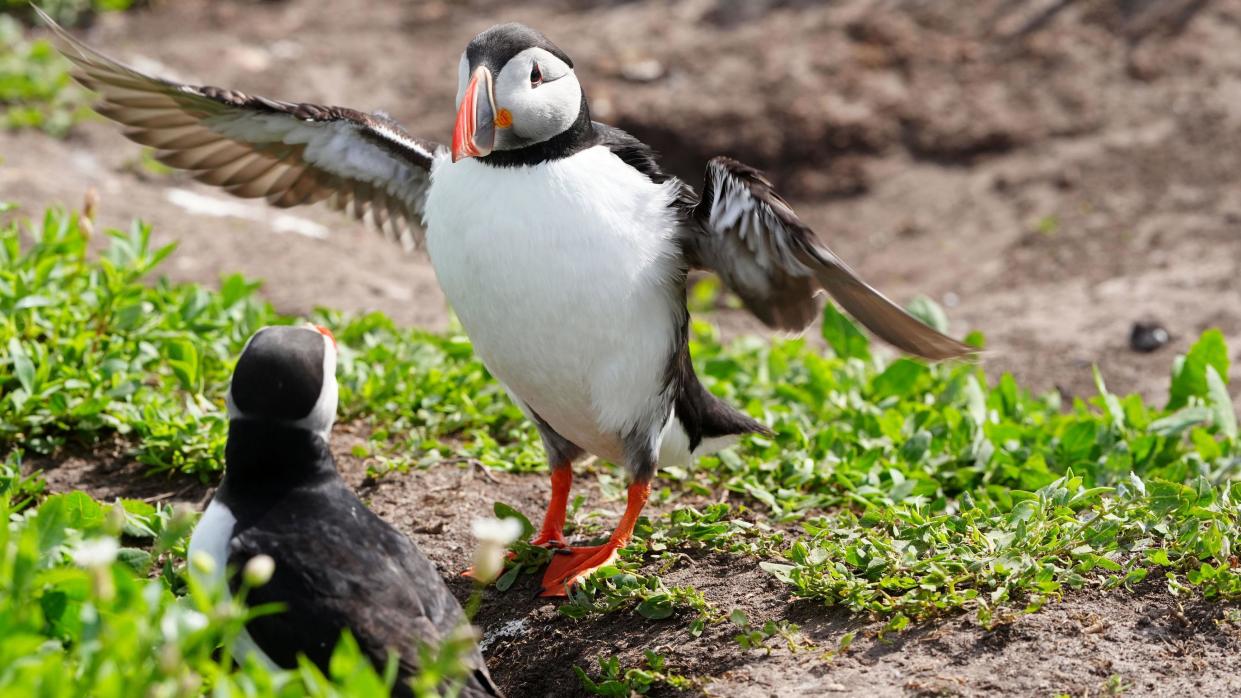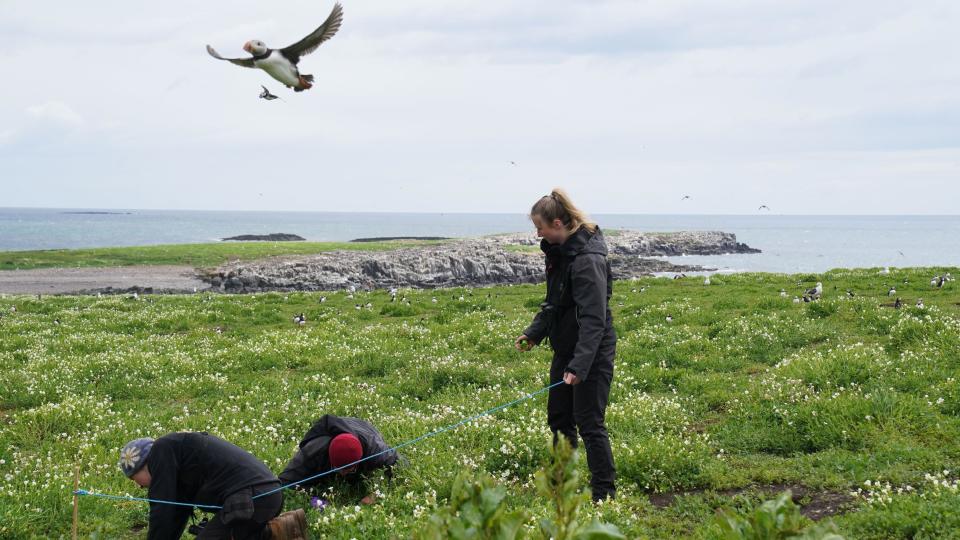Farne Islands 'clear of flu but bird numbers fall'

The Farne Islands are clear of bird flu but there has been a "catastrophic decline" in seabird numbers, rangers have warned.
The disease killed more than 9,600 seabirds and saw the area close to visitors for two years.
Tom Hendry from the National Trust said there was no sign of avian flu so far but that colonies of shags and other seabirds had fallen.
He said rangers were preparing to do their first full puffin count since 2019.
"We feel this is the result of some quite heavy autumn storms, so we reckon this season we'll be down 85% on last year," Mr Hendry said.
Limited sample surveys across only two to four islands over the last four years showed the average number of breeding pairs of puffins as under 40,000, compared to nearly 44,000 back in 2019.
Numbers of guillemots also appeared to be down by 46% and Arctic terns had arrived later and in smaller numbers than usual, the National Trust said.
“Two seasons of bird flu and challenging weather conditions with many storms have certainly taken a toll on the colonies," Mr Hendry added.

"Despite the good news that there's no sign of bird flu this season so far, we have had some quite catastrophic declines in some other seabirds.
"We know over 9,600 seabirds perished on the islands due to bird flu – with thousands more likely to have died at sea – but thankfully, as yet, we have not seen any signs of the disease since the seabirds have returned to breed."

The puffins spend the winter out at sea and return to breed on the islands in late March or early April.
They stay until the last chicks fledge in mid-August.
The birds nest underground and counting them requires close monitoring of burrows for signs of whether they are occupied.
If the rangers are unsure of whether a burrow is occupied they will sometimes put their arm in to carefully check for inhabitants.
This year, endoscope cameras will be used for the first time to further minimise any intrusion.
Follow BBC North East on X (formerly Twitter), Facebook and Instagram. Send your story ideas to northeastandcumbria@bbc.co.uk.


